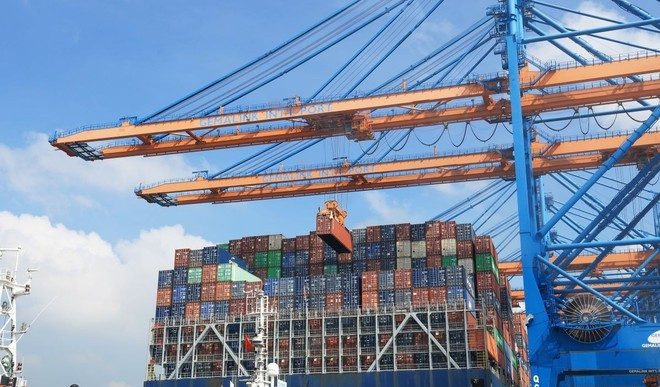WNAM REPORT: The Hong Kong-Shanghai Banking Corporation (HSBC) and Standard Chartered, in their reports released late October, raised the GDP growth forecasts for Vietnam to 7.9% and 7.5%, respectively, nearly 2 percentage points higher than their previous projections.
Similarly, earlier this month, the International Monetary Fund (IMF), the World Bank (WB), and the Asian Development Bank (ADB) also revised Vietnam’s growth forecasts upward, describing the country as a “rare bright spot” maintaining stable recovery amid global economic uncertainties.
This is reflected in Vietnam’s GDP growth in the third quarter, which reached 8.23% – the highest level since 2011. The figure not only demonstrates the economy’s strong momentum but also underscores Vietnam’s remarkable resilience amid consecutive challenges to global supply chains and rising protectionism.
Standard Chartered attributes Vietnam’s sustained growth to three main drivers – steady trade, resilient foreign direct investment (FDI) inflows, and a strong rebound in domestic demand
In terms of trade, Vietnam’s total foreign trade in the first nine months of 2025 exceeded 680 billion USD, up nearly 20% year-on-year. In September alone, the exports reached 42.7 billion USD, surging by 24.7% despite the US imposing a 20% tariff on most Vietnamese imports. Exports to the US still grew 38%, driven by product diversification and rising competitiveness of Vietnamese enterprises.This shows that Vietnam has not only withstood the impacts of global trade policies but also proactively tapped opportunities to reposition itself within international supply chains, becoming a key link in the “China Plus One” strategy of many multinational corporations.
FDI attraction also remains a bright spot for the economy. By September 2025, the disbursed FDI value hit 18.8 billion USD – the highest in the past five years, while the newly registered capital totalled 28.5 billion USD, up 15.2% year-on-year.
A notable highlight is the clear shift in investment structure. In addition to traditional inflows from the Republic of Korea (RoK), Singapore, and Japan, the US and mainland China are emerging as two new sources of investment, focusing on hi-tech production, renewable energy, and industrial infrastructure.
According to HSBC, Vietnam is becoming a strategic choice in the global value chain restructuring process thanks to its stable macroeconomic environment, a flexible fiscal policy, and rapidly improving industrial infrastructure.
Domestic growth drivers also reflect strong recovery. Retail sales in the third quarter rose 12%, while inflation was controlled at 3.38%, below the government’s 4.5% ceiling target. The tourism sector witnessed a robust rebound, welcoming 15 million international visitors in the first nine months – equivalent to 120% of the pre-pandemic level in 2019.
Notably, the stable monetary policy continues to support businesses. Standard Chartered forecasts that the refinancing rate will be maintained at 4.5% during 2025–2026, supporting adequate liquidity while balancing growth with inflation control.
However, the IMF warns that the US’s tariff policy could drag Vietnam’s GDP growth down by 0.5–0.7 percentage points in the last quarter of 2025 unless offset by public investment and domestic consumption. Domestic challenges, including rising household debt, restrained consumer spending, and a sluggish real estate recovery, may also exert short-term pressures.
However, analysts remain optimistic, seeing these challenges as a necessary test of the economic governance of Vietnam—an economy that has proven its ability to withstand major shocks, from the 2008 global financial crisis to the COVID-19 pandemic.
According to the WB, Vietnam currently benefits from healthy fiscal space, supported by low public debt and macroeconomic stability, which enables large-scale public investment to address infrastructure bottlenecks, generate employment, and spur private sector investment.
Meanwhile, the ADB said Vietnam should continue focusing on three key pillars—sustainable FDI, domestic consumption, and efficient public investment—while speeding up digital transformation and green energy transition. This approach is viewed as a strategic path to maintain high growth and ensure long-term development quality.
With GDP growth surpassing 8% in the third quarter and optimistic projections from HSBC (7.9%) and Standard Chartered (7.5%), the full-year target of 8.5%, previously deemed “ambitious”, now appears increasingly achievable.


